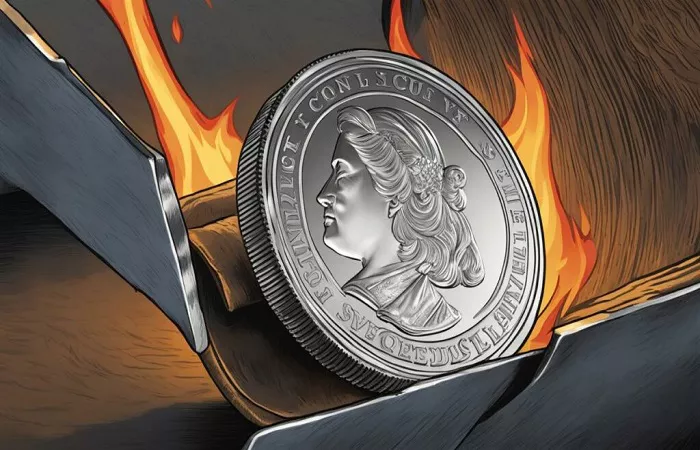Gold prices soared to a fresh record high on Wednesday, surpassing $3,350 an ounce, following a sharp drop in stock prices triggered by Nvidia’s warning of a $5 billion hit to its earnings due to escalating trade tensions between the United States and China.
This surge marks a significant milestone in a broader rally, with gold prices up more than 25% since the beginning of the year. The ongoing trade uncertainty, particularly regarding tariffs, has prompted investors to seek safe-haven assets. Gold futures contracts climbed more than 3% on Wednesday afternoon, hitting their highest level in history.
Investor Demand and Tariff Fears Drive Gold’s Rise
The jump in gold prices is part of a broader trend in which gold exchange-traded funds (ETFs) have experienced consistent inflows throughout the first quarter of 2025. In late February and March, demand for gold ETFs reached its highest level since 2022, as investors sought to hedge against potential economic fallout from the escalating trade conflict.
President Donald Trump’s recent announcement of sweeping “reciprocal” tariffs could push demand even higher in the coming months. Following the tariff announcement, a Bank of America survey revealed that nearly half of fund managers—49%—considered gold to be the most popular investment, marking a shift from the previous preference for tech stocks, specifically the “Magnificent Seven” tech giants.
UBS analysts highlighted the growing appeal of gold, citing an environment of rising tariffs, weaker economic growth, higher inflation, and geopolitical risks as key factors motivating increased gold allocations. “The case for adding gold allocations has become more compelling than ever,” the analysts wrote in a recent note.
Gold Equities Follow Suit
Shares of gold mining companies also saw significant gains on Wednesday, with Newmont (NEM) and Barrick Gold (GOLD) tracking the rise in gold prices. Despite concerns about the operational and cost performance of gold miners, analysts remain bullish on the sector’s prospects.
Will the Rally Continue?
The World Gold Council, a trade association for gold miners, suggests that the current rally could have legs. Central banks have been significant drivers of gold demand over the past few years, and there is no indication they will slow their purchases anytime soon. Furthermore, investors remain underexposed to gold, with gold ETFs accounting for just 1.6% of the value of all U.S. ETFs, compared to 7.6% at the peak of a similar rally in 2011.
However, several risks could temper the rally. If gold prices continue to climb, demand from both investors and central banks could slow. Additionally, analysts have pointed to an increasing risk of a liquidity crisis that could force investors to liquidate gold holdings to cover margin calls. The resolution of trade tensions through bilateral agreements could also restore investors’ risk appetite, potentially dampening gold’s appeal.
Despite these potential headwinds, the ongoing economic and geopolitical uncertainties suggest that gold’s upward trajectory could persist, making it a key asset to watch in the coming months.
Related topics:
- India Surpasses China in Gold Purchases, Buying 51% More in Three Months
- Qilu Bank Enhances Support for Small Businesses with Innovative Financial Tools
- Bitcoin Poised for a Surge Amid Gold’s Delivery Delays, Expert Claims


